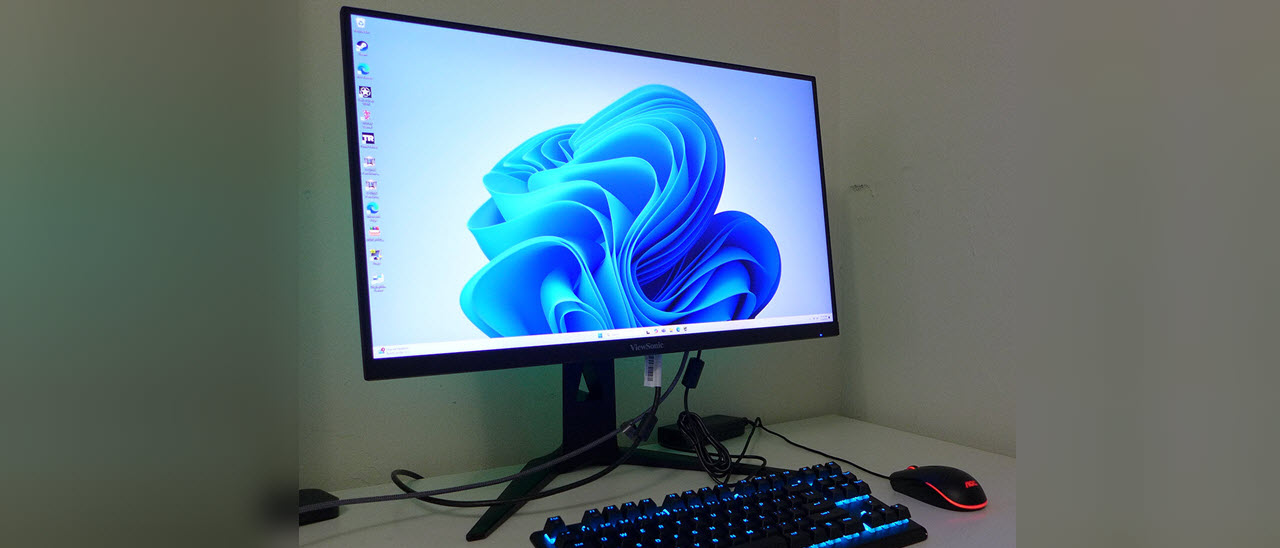Why you can trust Tom's Hardware
To compare the XG2736-2K’s performance, I’ve assembled a group of 27-inch QHD LCD displays. Most of the 240 Hz screens out there are OLEDs, which would be unfair here as they are around twice the price. At 240 Hz is HP’s Omen 27qs while Gigabyte’s M27QA ICE, ASRock’s PG27QFT2A, Xiaomi’s G Pro 27i and Asus’ XG27ACS run at 180 Hz.
Pixel Response and Input Lag
Click here to read up on our pixel response and input lag testing procedures.
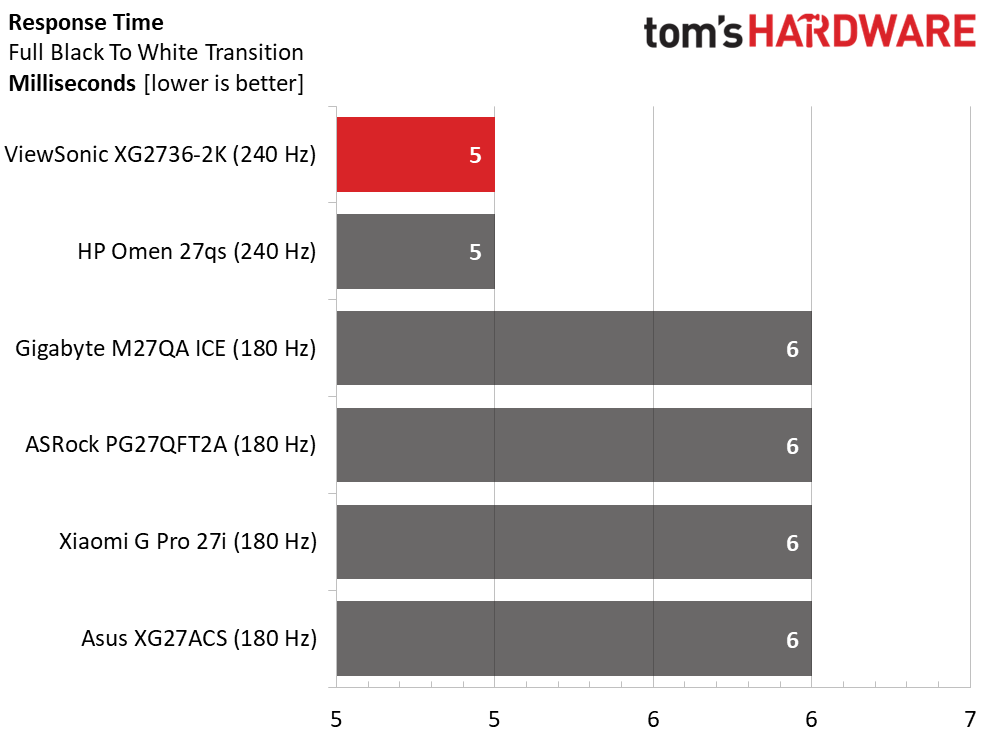
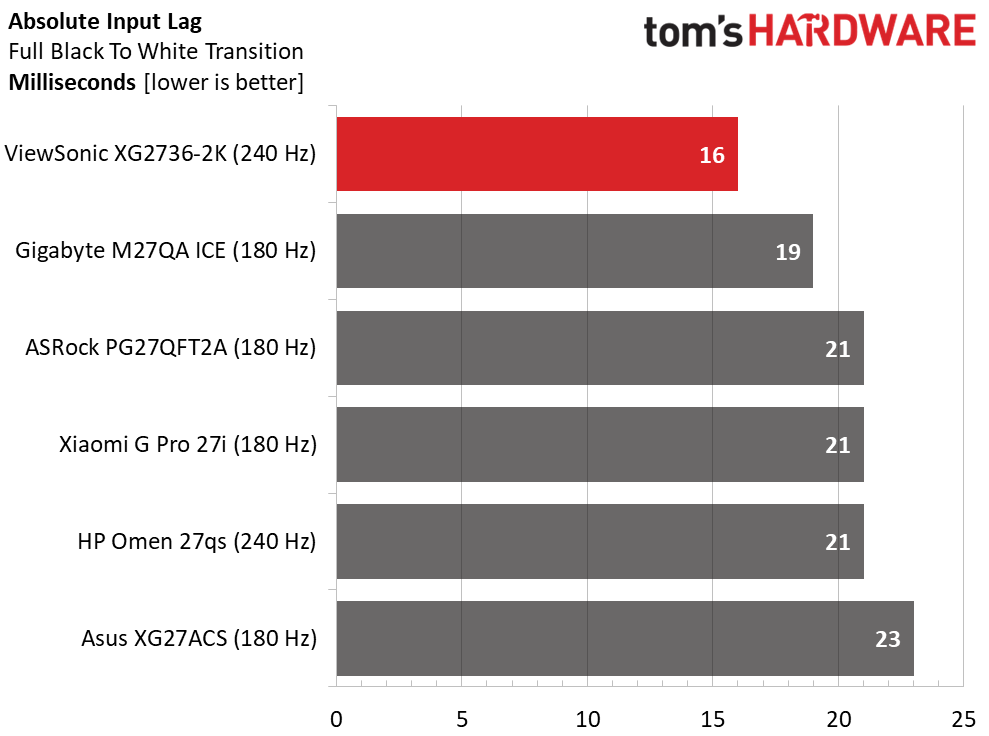
The 60 Hz difference in refresh rates doesn’t make a huge difference overall with just a 1ms gap in panel response times. 180 Hz delivers smooth motion when it’s paired with a good overdrive. The XG2736-2K is very smooth but when compared to the others, the difference is small.
Where things get interesting is in the lag test. Clearly, the HP’s 240 Hz doesn’t give it an advantage in a real-feel scenario. And the XG2736-2K is well ahead of the others at 16ms total. This is super quick and starting to infringe on OLED territory. That tech will give you the smoothest motion but when input lag is factored in, OLED doesn’t have a huge advantage. The XG2736-2K is one of the fastest monitors I’ve tested regardless of refresh rate.
Test Takeaway: The XG2736-2K proves that you don’t need an expensive OLED, or 500 Hz FHD monitor to enjoy premium game performance. The two key elements, motion resolution and input lag can be had excellently from this value-oriented display. The XG2736-2K is fully qualified for competition and will appeal to gamers of all skill levels.
Viewing Angles
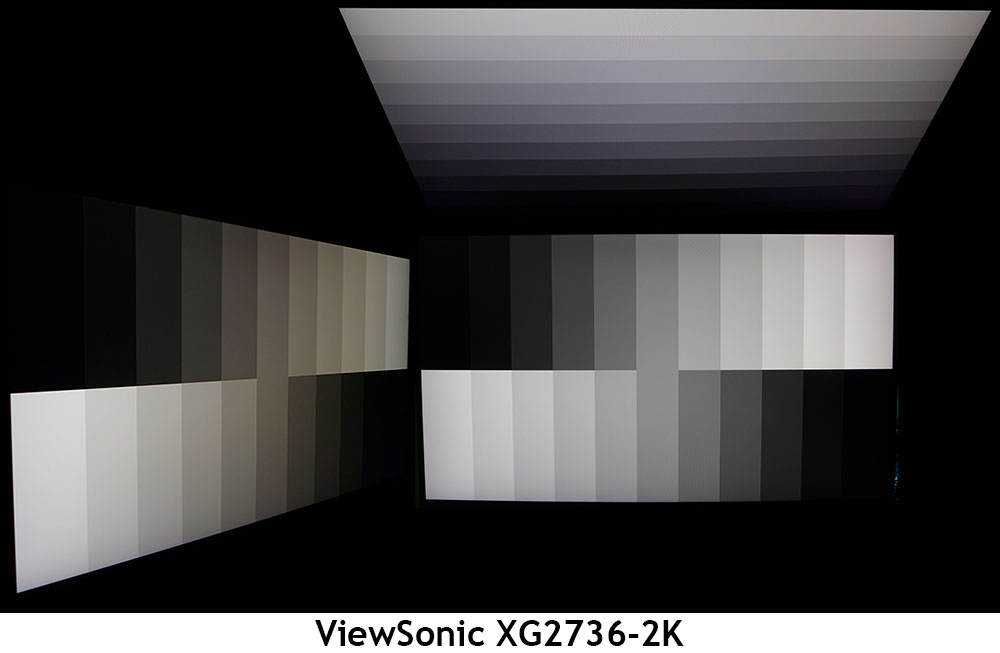
IPS panels typically offer the best off-axis image quality among LCD technologies. The XG2736-2K’s photos look like what I’d expect from an older design. There is minimal light reduction or gamma shift at 45 degrees to the sides, but a green tint can clearly be seen. It dulls the image a bit to where sharing this screen won’t be ideal. The top view has a washed out look from reduced gamma and a blue tint. Some IPS panels like the HP Omen 27qs offer better viewing angles.
Screen Uniformity
To learn how we measure screen uniformity, click here.
Get Tom's Hardware's best news and in-depth reviews, straight to your inbox.
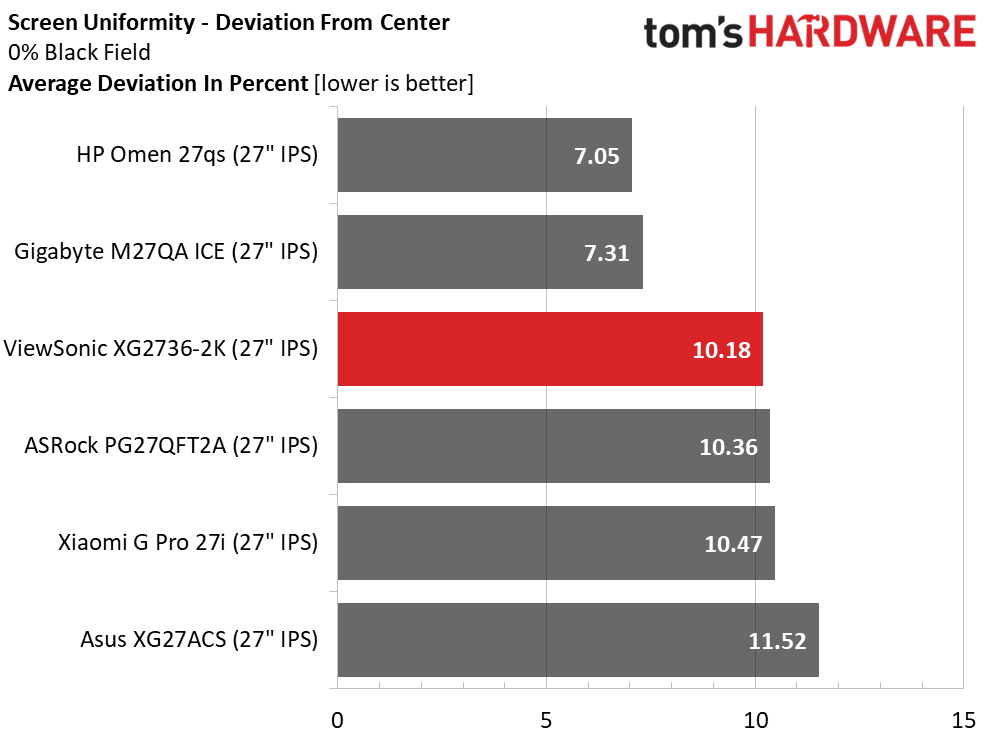
My XG2736-2K sample showed decent screen uniformity with an average 10.18% deviation from the center zone. The meter showed that to be a tad hot but not in a visible way. Color and hue remained visually consistent in test patterns and actual content.
MORE: Best Gaming Monitors
MORE: How We Test PC Monitors
MORE: How to Buy a PC Monitor
Current page: Response, Input Lag, Viewing Angles and Uniformity
Prev Page Features and Specifications Next Page Brightness and Contrast
Christian Eberle is a Contributing Editor for Tom's Hardware US. He's a veteran reviewer of A/V equipment, specializing in monitors. Christian began his obsession with tech when he built his first PC in 1991, a 286 running DOS 3.0 at a blazing 12MHz. In 2006, he undertook training from the Imaging Science Foundation in video calibration and testing and thus started a passion for precise imaging that persists to this day. He is also a professional musician with a degree from the New England Conservatory as a classical bassoonist which he used to good effect as a performer with the West Point Army Band from 1987 to 2013. He enjoys watching movies and listening to high-end audio in his custom-built home theater and can be seen riding trails near his home on a race-ready ICE VTX recumbent trike. Christian enjoys the endless summer in Florida where he lives with his wife and Chihuahua and plays with orchestras around the state.
